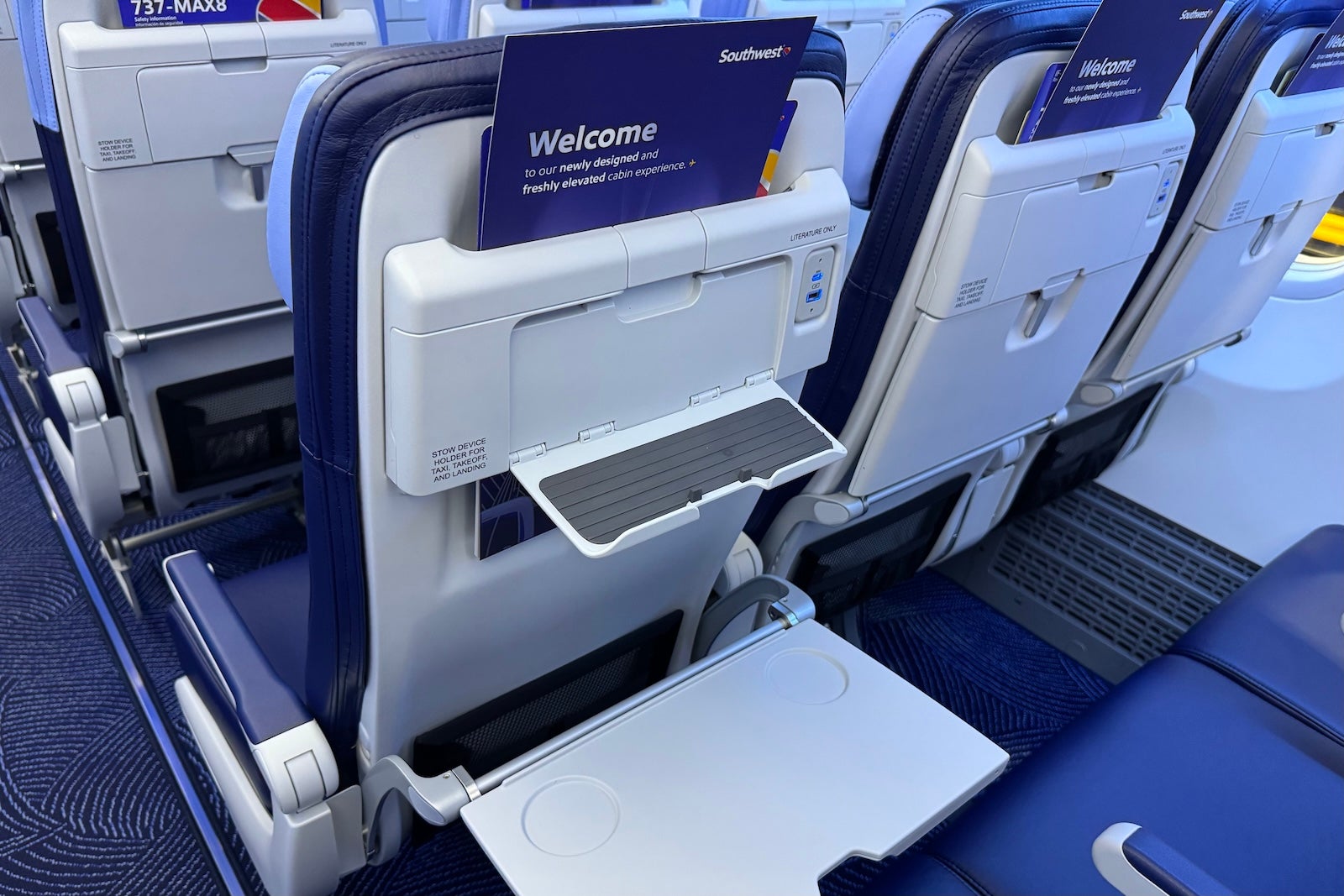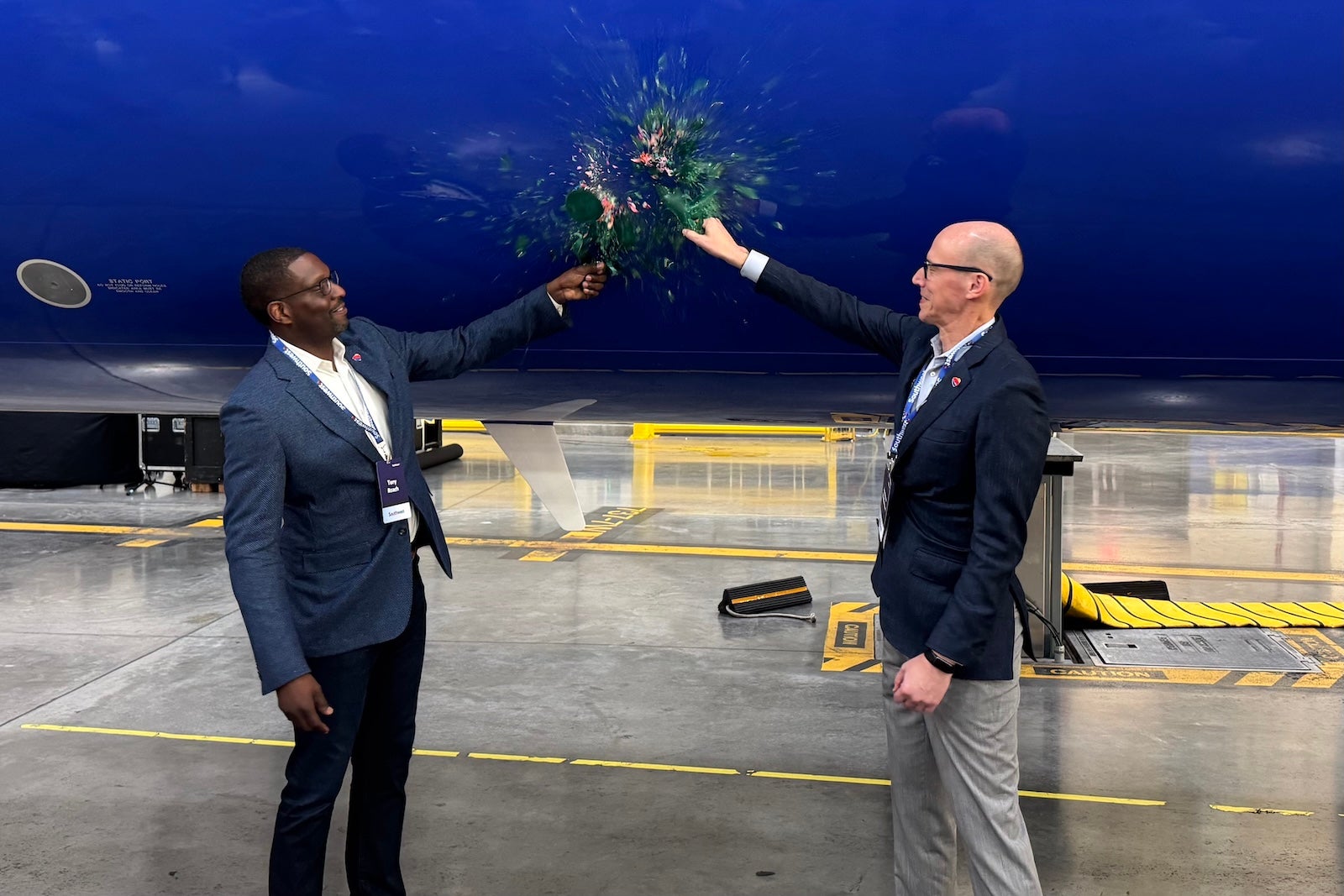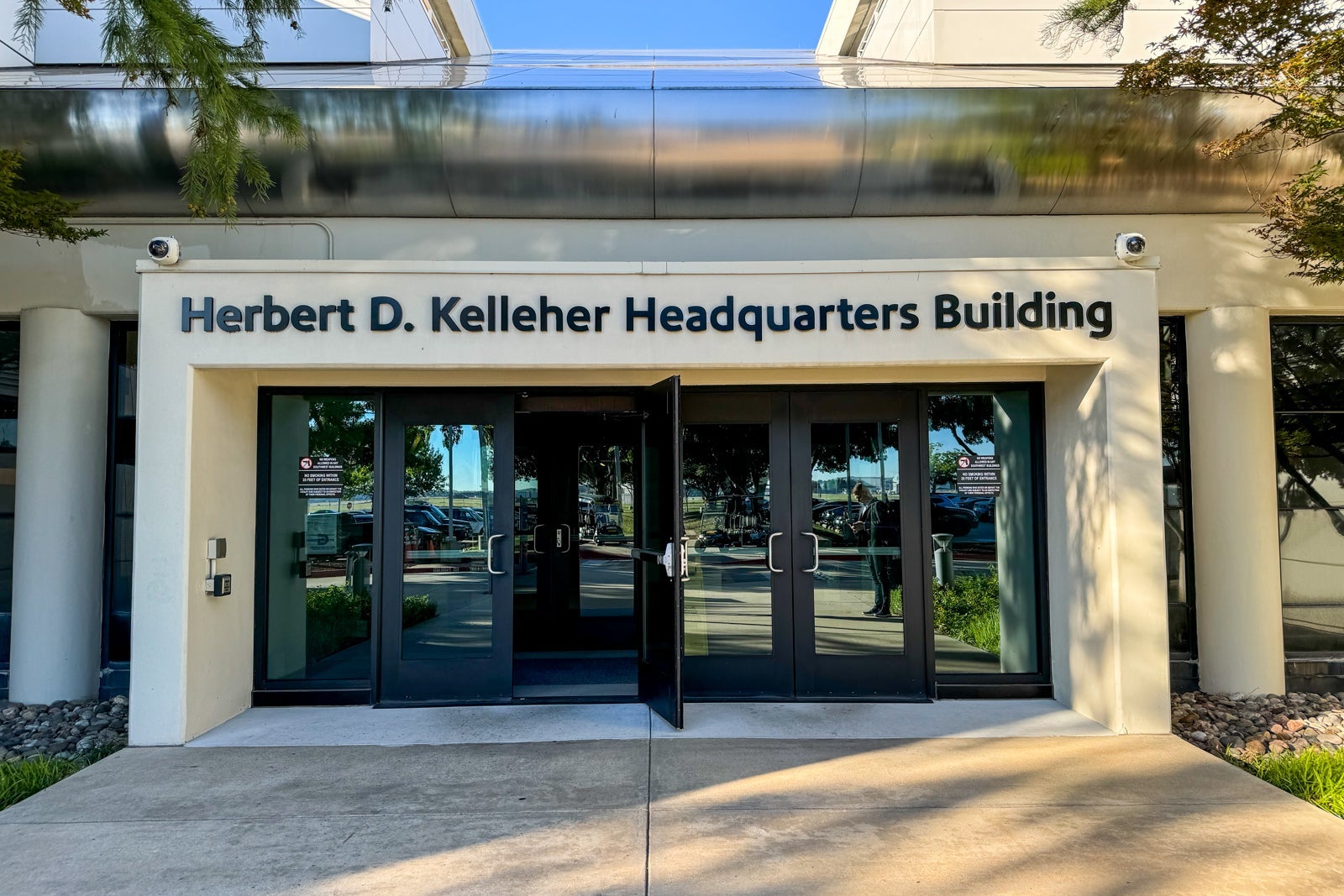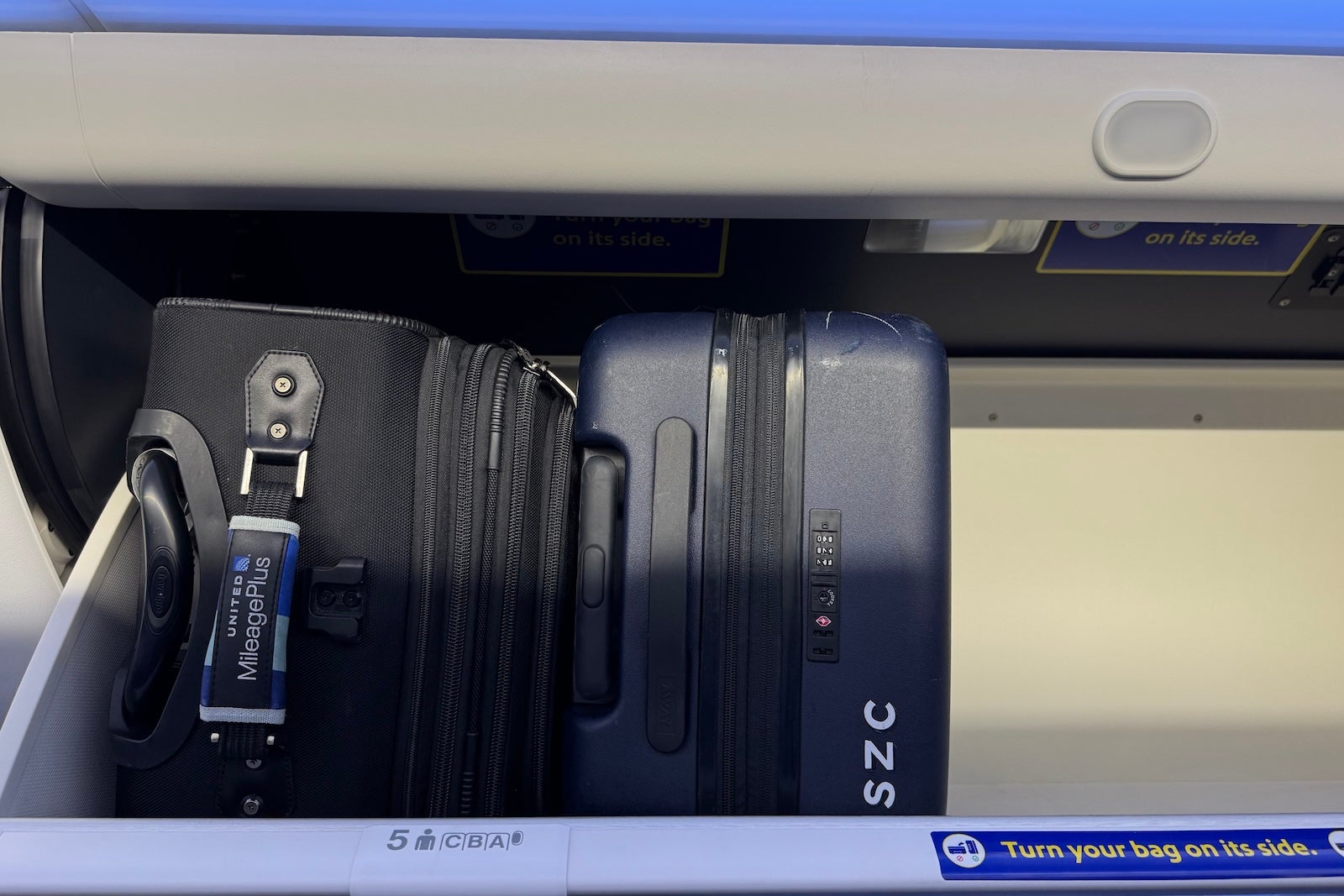

Over the past year, Southwest Airlines customers have heard a lot about the company’s transformation, from end of “bags fly free” next time dawn of assigned seating.
Now, you can practically glimpse the future… if you’re on the right plane.
Earlier this month, I had the opportunity to fly into Southwest Airport. First plane to wear all the changes. The Dallas-based airline has been talking about it for more than a year.
Remember those new seats Had the airline planned to deploy? They are on this new Boeing 737 MAX 8 plane and three others like it.
Rows with more legroom? Look for the navy seats highlighted in light blue.
Larger overhead bins for traveling passengers to avoid new airline baggage fees? Check.
Free Wi-Fi and heart emblems everywhere you look? Yeah.
1 of 2
SEAN CUDAHY/THE POINTS GUY
After a year of headlines that suggest a change of spirit At one of America’s most historically customer-friendly airlines, Southwest executives see this plane as the best physical evidence of a transition they have argued customers ultimately want.
“It takes several years to put these things together, piece by piece,” Tony Roach, director of customer and brand, said in an interview with TPG. “Seeing it all on a plane, all the pieces together, is like seeing the whole vision we’ve been thinking about.”

Reward your inbox with TPG’s daily newsletter
Join over 700,000 readers to receive breaking news, in-depth guides, and exclusive offers from TPG experts.
Read more: Southwest’s ‘big milestone’: First plane with a new, modern cabin makes its grand debut
Driven by numbers
Leaders say many of Southwest’s latest changes are rooted in data.
For example, according to their surveysat least 80% of customers prefer assigned seating instead of its historical first-come, first-served model.
And those new seats? The airline said more than 1,000 people tested them, something you’ll see on all newly delivered planes.

And then there is the question of financial metrics.
After decades of success, Southwest’s profits since the COVID-19 pandemic have solidly tracked those of major rivals Delta Air Lines and United Airlines, which have been boosted by their premium seats, long-haul international route networks and lucrative loyalty programs.
Starting last year, Southwest – facing rising costs and pressure from an activist investment group – embarked on a path to revamp its business model, which had historically been devoid of pesky additional fees, but also the conveniences that had been a boon to the revenue of the network’s airlines.
“The old model wasn’t working, so now we’ve pivoted,” Chief Operating Officer Andrew Watterson told analysts in April.
The ‘pivot’ of Southwest Airlines
Customer wallets have already tested that twist. Checked baggage fees went online in May and the airline updated your line of credit cards in July.
However, the real reset actually begins on January 27, 2026, when assigned seating goes live on all planes and flights in Southwest’s network. That date will also mark the debut of the aircraft carrier renewed boarding process and rows of extra space (The Southwest version adopts a booster seating option.)
Standing in front of the airline’s newest MAX 8 plane last month in Phoenix, Watterson suggested that Southwest’s changes amount to a logical evolution.
That despite a myriad of Industry experts fear the dilution of a brand once personified by co-founder Herb Kelleher, and many brochures lamenting the end of some prominent Southwest benefits and policies that were unique in the airline industry.
“We have changed at different periods in our history as our environment has changed. As customer desires and expectations have changed, we have changed,” Watterson said. “And every time we change, people tell us we’re doomed.”

Could Southwest lounges, first-class seating and long-haul flights be next?
Southwest’s evolution won’t end after its first assigned-seat flight is delayed in late January.
Next year, the airline hopes to strengthen its fledgling network of airline partners. with international Rapid Rewards redemptions – a move the airline hopes will improve the appeal of its loyalty program and, in turn, inspire more members to apply for one of its co-branded credit cards.
Beyond that, it seems increasingly likely that the airline will look to add even more high-end offerings that would once have been unthinkable for Southwest.

CEO Bob Jordan has spoken openly on the possibility of adding long-haul international flights and true first class seats (the latter already on the horizon for leisure-focused competitors) JetBlue and Border Airlines.
“We are actively pursuing continued changes to expand our product offerings for our customers,” Jordan said on the company’s earnings conference call late last month.
“Including things,” he added, “like premium seating, airport lounges and long-haul international destinations.”
‘What do our customers want?’
At least one of those things appears to be about to happen. Last month, the state of Hawaii gave the green light to Southwest to build a hall in Honolulu.
It’s the latest sign that the changes Southwest has made so far may be just the beginning.
“We’re not stuck in a model that says, ‘This is how Southwest does it, this is how we’ll always do it,'” Roach told me. “The model that we are 1762268015 The answer is: ‘What do our customers want?'”
Related reading:

